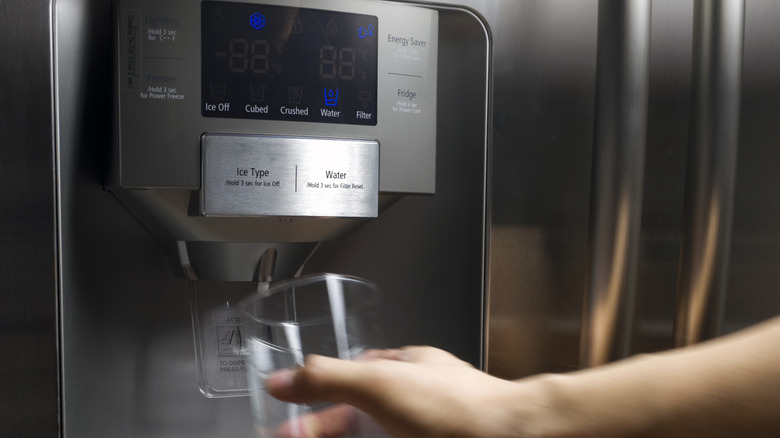Why Does A Refrigerator Need A Water Line?
Refrigerators that feature built-in water dispensers or automatic ice makers need to be connected to a water source. Water can be provided in one of two ways: By connecting the fridge directly to plumbing via a water line or by manually adding water to a reservoir inside the fridge. Fridges without ice makers or water dispensers don't need any type of water source to function properly.
Water Lines Aren't Required
A refrigerator needs a water line only if it has a built-in water dispenser and/or automatic ice maker.
Although refrigerators with water lines are popular, they aren't necessary. There are several reasons why consumers intentionally look for a refrigerator without a water line. First, not having a water line, water dispenser or ice maker eliminates problems like leaks or performance issues. According to Consumer Reports, 21 percent of refrigerator models experience problems with dispensing water or ice and 14 percent have trouble making ice.
If you don't want to deal with faulty parts that you don't regularly use — or technically even need — you may choose a refrigerator without a water line. These features also take up space in the door and freezer, so choosing a French door refrigerator without an ice maker and water dispenser can give you a greater capacity for food storage. Finally, extra features typically come with a higher price tag. Choosing a refrigerator without a water line represents a more affordable option.
Already have a refrigerator with a water line you never use? You can disconnect the water line without affecting the temperature control inside your refrigerator or freezer.
Water Line Alternatives
You can still enjoy an automatic ice maker and water dispenser without having a water line. There's always the possibility for a water line to spring a leak, and because they're connected to a water pipe that's always turned on, a mini flood and subsequent water damage could result. That's not a risk everyone wants to take. Refrigerators made with water tanks provide a leak-free alternative without sacrificing the luxury of automatic ice production and cold, filtered water.
Although it's convenient to get water and ice directly from the refrigerator, purchasing a refrigerator without a water line or reservoir doesn't mean you can't have homemade ice or chilled and filtered water. Ice cube trays require minimum effort to fill with water, freeze and extract. You can also keep a water pitcher in your refrigerator and add a filter to the pitcher or to your kitchen faucet.
Using a Countertop Ice Maker
Maybe ice cube trays really aren't a practical option for your family, but you're not interested in a refrigerator with a water line. In that case, consider using a countertop ice maker. These portable appliances do not have to connect to a water line. Instead, you fill up the machine's water tank before allowing the cycle to run.
A countertop ice maker can quickly make ice for parties or hot summer days and then slide into the pantry until its next use. Alternatively, you can run it as-needed and store the ice in a large container in your freezer. Now you have the convenience of scooping ice instead of using cube trays, but without the need for a brand new refrigerator with a water line.
